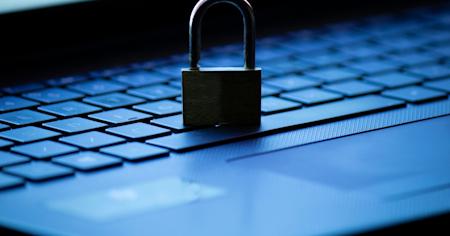Data protection has become a top priority in today’s digital world, especially as remote work and cyber threats continue to grow. For IT teams, protecting sensitive information isn’t just about compliance—it’s about keeping the organization safe and resilient.
In this post, we’ll break down practical strategies and techniques that can strengthen your data protection efforts, from encryption to smart access controls. Plus, we’ll look at how remote access solutions like Splashtop can be a powerful ally in keeping your data secure.
What is a Data Protection Strategy?
A data protection strategy is a comprehensive plan designed to safeguard an organization’s valuable data assets by ensuring they remain secure, available, and accessible only to authorized individuals. This strategy involves a set of policies, procedures, and technologies tailored to meet data protection needs at every level of an organization.
At its core, a strong data protection strategy prioritizes data security (protecting data from unauthorized access and threats), data availability (ensuring data is accessible whenever needed), and access control (limiting access to sensitive data based on user roles and permissions). By implementing a robust data protection strategy, IT teams can better manage risks, maintain compliance, and ensure business continuity.
Why IT Teams Can’t Afford to Ignore Data Protection Strategies
In today’s digital-first environment, where data is at the heart of every organization, effective data protection strategies have become essential for IT teams. The growing volume of data, combined with rising cybersecurity threats and regulatory requirements, means that any lapse in data protection could lead to severe consequences. Without a well-defined data protection strategy, organizations risk exposing sensitive information to potential breaches, data loss, and operational disruptions.
Poor data protection can result in serious issues, including data breaches, financial losses, and reputational damage—consequences that can be hard for businesses to recover from. Additionally, data protection regulations, such as GDPR and CCPA, impose strict standards that companies must adhere to, further emphasizing the need for a proactive approach to data security.
An effective data protection strategy helps organizations stay resilient by mitigating these risks, enhancing security measures, and ensuring they comply with regulatory standards. By adopting a solid data protection framework, IT teams can focus on driving operational efficiency and safeguarding their organization’s reputation and customer trust.
Key Components and Techniques for Effective Data Protection in IT Systems
Implementing effective data protection strategies requires a comprehensive approach that addresses every stage of the data lifecycle, from creation to disposal. Here are essential components and techniques that strengthen IT security, providing a foundation for robust data protection.
1. Data Lifecycle Management
Data lifecycle management involves organizing and governing data as it moves through its lifecycle stages—creation, storage, usage, and disposal. By defining policies for each stage, organizations can ensure that data is handled appropriately and securely, minimizing the risk of exposure or unauthorized access at any point in its lifecycle. Effective lifecycle management also optimizes storage space and helps maintain compliance by securely disposing of outdated data.
2. Risk Management
Risk management in data protection involves identifying potential threats to data integrity and security and developing plans to mitigate those risks. This includes regular risk assessments to evaluate vulnerabilities in data handling processes and implementing measures such as access controls, threat detection, and response plans. With a proactive approach to risk management, organizations can better protect data from both internal and external threats.
3. Data Storage Management
Proper data storage management ensures that data is stored efficiently and securely. This involves selecting appropriate storage solutions (e.g., cloud storage, on-premises servers) and implementing redundancies to protect against data loss. Storage management also includes monitoring storage health, ensuring encryption of stored data, and managing access rights. With secure storage, organizations can guard against accidental loss, data corruption, and unauthorized access.
4. Data Encryption
Data encryption is a critical technique for protecting sensitive data. By converting data into a coded format, encryption ensures that only authorized parties can access the information, even if it is intercepted during transmission or storage. Both AES (Advanced Encryption Standard) and RSA (Rivest-Shamir-Adleman) encryption methods are commonly used to secure data in transit and at rest, providing an additional layer of security.
5. Access Controls
Access controls are essential for limiting who can view or edit sensitive information. By assigning user roles and permissions, organizations can restrict data access based on job functions, ensuring that only authorized individuals can access certain data. Techniques such as multi-factor authentication (MFA) and role-based access control (RBAC) further enhance security by adding layers of verification and controlling access based on user identity and responsibilities.
6. Backup & Recovery
A solid backup and recovery plan is vital for ensuring business continuity in the event of data loss due to accidental deletion, cyberattacks, or natural disasters. Regular backups create secure copies of data that can be restored when needed, minimizing downtime and protecting against data loss. Recovery solutions can also include cloud-based backups, which provide rapid recovery options and secure storage of data copies off-site.
7. Data Masking
Data masking is a technique used to hide sensitive information within datasets, allowing teams to work with data without exposing confidential details. This is especially valuable in non-production environments, where developers or analysts need realistic datasets without the risk of exposing sensitive information. Masked data retains its usability but minimizes the risk of breaches during testing or development.
8. Monitoring and Auditing
Regular monitoring and auditing are essential for identifying potential security issues before they become major problems. Monitoring solutions can detect unusual activity, unauthorized access attempts, or data transfers, helping IT teams respond to threats in real time. Audits provide a deeper look into data handling practices, revealing potential weaknesses in the data protection strategy and ensuring compliance with regulatory standards.
Each of these components plays a unique role in a holistic data protection strategy. By combining these techniques, organizations can create a multi-layered security framework that mitigates risks and ensures robust protection for all critical data assets.
Best Practices for Ensuring Effective Data Protection in IT
To build a resilient data protection strategy, IT teams need to implement best practices that safeguard data integrity and security while maintaining operational efficiency. Here are key best practices to help ensure data protection across IT environments.
1. Conduct Regular Audits and Risk Assessments
Regular audits and risk assessments are foundational to understanding and strengthening data protection efforts. Audits help identify vulnerabilities in data handling, storage, and security protocols, enabling IT teams to address potential weaknesses proactively. Risk assessments allow organizations to prioritize data protection resources based on identified risks, making it easier to implement targeted improvements.
2. Implement Continuous Monitoring and Real-Time Threat Detection
Continuous monitoring and real-time threat detection are essential for identifying and responding to security incidents promptly. Monitoring tools can detect unauthorized access attempts, unusual data transfers, and other suspicious activities, alerting IT teams to potential threats. Real-time threat detection allows organizations to act quickly, reducing the potential impact of breaches or data leaks.
3. Enforce Data Encryption Across All Channels
Data encryption is a critical best practice for protecting data during storage and transmission. Encrypting data ensures that even if unauthorized individuals gain access to it, they cannot read or use the information. Enforce encryption across all data channels, including data at rest (stored data) and data in transit (data being transferred), to provide a robust layer of security against interception or theft.
4. Apply the Principle of Least Privilege for Access Control
The Principle of Least Privilege (PoLP) limits user access to only the information and resources necessary for their job roles. This minimizes the risk of unauthorized data access, as users cannot access sensitive information outside their specific responsibilities. By applying PoLP alongside role-based access control (RBAC), IT teams can reduce exposure to sensitive data and enhance overall security.
5. Establish a Robust Backup and Recovery Plan
A reliable backup and recovery plan is essential for minimizing data loss and downtime in the event of data corruption, deletion, or cyberattacks. Regularly scheduled backups and testing of recovery procedures ensure that critical data can be restored quickly and accurately. Consider using automated backup solutions and storing backups off-site or in the cloud for added protection.
6. Conduct Regular Employee Training and Awareness Programs
Human error is one of the leading causes of data breaches, making employee training critical to any data protection strategy. Regular training sessions educate employees on data protection best practices, such as recognizing phishing attempts, using secure passwords, and following access control policies. By raising awareness, organizations can reduce risky behaviors and enhance overall data security.
7. Maintain Compliance with Regulatory Standards
Adhering to industry-specific regulatory standards, such as GDPR, HIPAA, or CCPA, is essential for legal compliance and building customer trust. Regularly review compliance requirements and update data protection measures as needed to ensure they meet regulatory standards. Compliance not only protects against fines but also reinforces data protection protocols within the organization.
8. Conduct Routine Reviews and Updates of Data Protection Policies
As new security threats and technologies emerge, it’s important to regularly review and update data protection policies. Periodic reviews ensure that protection measures remain relevant and effective, adapting to evolving risks and regulatory changes. Updating policies as needed allows IT teams to stay proactive in managing data protection and maintaining a secure environment.
Strengthening Data Protection with Remote Access Solutions
Advanced remote access solutions can play a pivotal role in modern data protection strategies, enabling IT teams to secure and manage data across distributed environments effectively. With the rise of remote work, organizations face increased exposure to potential security threats. Remote access solutions mitigate these risks by offering enhanced security features that strengthen data protection.
Secure Access Controls
Next-generation remote access solutions provide robust access controls that limit data access to authorized users only. Features like multi-factor authentication (MFA) and role-based access control (RBAC) add layers of verification, ensuring that only verified individuals can access sensitive data or systems. These secure access controls not only reduce the risk of unauthorized access but also make it easier for IT teams to enforce the Principle of Least Privilege, further enhancing data security.
End-to-End Encryption
Encryption is a cornerstone of data protection, and advanced remote access solutions prioritize encryption at every stage of data transmission. By using end-to-end encryption, these solutions ensure that data remains secure as it travels between devices, even when accessed from remote or potentially insecure locations. AES (Advanced Encryption Standard) or similar encryption protocols protect data in transit, making it virtually unreadable to unauthorized parties. This encryption layer is especially crucial for organizations handling sensitive information, such as healthcare or financial data, where confidentiality is paramount.
Real-Time Monitoring and Threat Detection
Real-time monitoring capabilities in remote access solutions allow IT teams to detect and respond to potential security threats as they arise. These solutions often include activity logging and session monitoring features, providing visibility into who accessed data, when, and from where. With real-time alerts for unusual or unauthorized activities, IT teams can address threats immediately, minimizing the risk of data breaches and improving overall security.
Centralized Management and Policy Enforcement
Next-generation remote access solutions offer centralized management, making it easier for IT teams to set and enforce data protection policies across all devices and locations. Centralized control ensures that policies like access restrictions, session timeouts, and encryption requirements are uniformly applied, reducing the likelihood of gaps in security protocols. This centralized approach simplifies compliance efforts and makes managing data protection policies more efficient.
Scalability for a Growing Digital Workforce
As organizations expand and remote work becomes more prevalent, advanced remote access solutions offer the scalability needed to maintain data protection across an increasingly distributed workforce. These solutions adapt to the needs of growing teams and changing data environments, providing consistent protection for data as organizations evolve. Scalability ensures that data protection measures remain effective, regardless of how large or complex the IT infrastructure becomes.
Elevate Your Data Protection Strategy with Splashtop Secure Remote Access
As data security becomes more crucial, companies need remote access tools that keep information safe without sacrificing ease of use. Splashtop offers a suite of powerful remote access tools designed with security as a core feature, helping businesses ensure data is always safe, no matter where it's accessed from.
With Splashtop, you gain access to industry-leading security features, including multi-factor authentication (MFA), end-to-end AES-256 encryption, and granular access controls that give IT teams complete control over who accesses sensitive data. Splashtop also provides real-time monitoring and activity logging, allowing you to track remote sessions and respond to any unusual activity quickly, adding another layer of protection to your data environment.
Whether your team is remote, hybrid, or distributed, Splashtop’s scalable solutions are designed to adapt as your business grows, offering robust protection for data at all stages. Experience the peace of mind that comes with a secure, user-friendly remote access solution.
Learn more about Splashtop’s security features, Splashtop remote access, and start a free trial today and see how it can elevate your organization’s data protection strategy.





